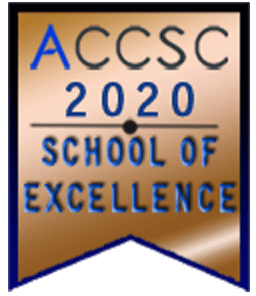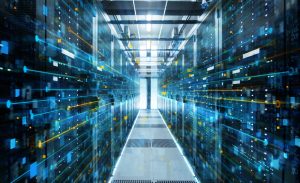
Information Technology programs are very popular college majors that train students for many in-demand jobs. Students prepare for the artificial intelligence (AI) revolution by learning and applying data-driven IT skills and knowledge. Contact ITI Technical College today for more information.
What Is Data-Driven IT?
Data-driven IT means using data analysis to guide strategic decisions within an organization, leading to more informed and efficient operations. This approach involves leveraging data analytics, business intelligence, and machine learning. They are used to make better decisions, optimize processes, and improve overall performance. Students are taught these principles:
Data Collection and Management are used to gather, store, and organize data from various sources for decision-making.
Data Analysis uses statistical methods, machine learning, and other techniques to extract meaningful insights from data.
Decision-Making is improved by using data-driven insights for strategic decisions, improving business processes, and achieving goals with objective and evidence-based approaches.
Continuous Improvement is better achieved by regularly monitoring and evaluating the effectiveness of data-driven strategies and making adjustments as needed.
Enhanced Efficiency is made possible by optimizing processes and identifying areas for improvement using data analysis.
Increased Customer Satisfaction is realized by tailoring products, services, and communication based on customer data and preferences.
Competitive Advantage is a benefit gained by leveraging data-driven insights to gain a competitive edge in the market.
Reduced Costs are the result of identifying and eliminating inefficiencies, optimizing resource allocation, and reducing operational costs.
 Examples Of Data-Driven IT In Action
Examples Of Data-Driven IT In Action
Data-driven IT programs teach students how to apply AI and other advanced technologies to improve business operations. Customer Relationship Management (CRM) uses data to personalize customer interactions, improve sales, and enhance customer satisfaction.
Netflix uses data to analyze viewing habits and recommend shows and movies. Amazon uses data on past purchases and browsing history to suggest relevant products. Target stores use data to identify customers likely to be pregnant and target them with relevant promotions.
Supply Chain Management can optimize inventory levels, predict demand, and improve logistics by using data analysis. Marketing is enhanced through targeting advertising campaigns, analyzing website traffic, and measuring campaign effectiveness using detailed data. IT Operations Management monitors system performance, predicts outages, and optimizes resource allocation using detailed data.
|
“Information Technology programs are very popular college majors that train students for many in-demand jobs.” |
Data-Driven IT Technology Programs Teach Data-Driven IT Challenges
Data-driven IT is not without its challenges even for the most advanced applications and companies. These are the challenges that IT students are taught in technical schools:
- Data Overload and Integration: The sheer volume of data can make it difficult to identify relevant information and can lead to analysis paralysis. Integrating data from various sources and systems can be complex and time-consuming.
- Data Privacy and Security: Technicians must ensure that data is collected, stored, and used by privacy regulations and security best practices.
- Data Quality Issues: Data must be accurate and complete to provide sound insights and good decision-making.
- Data Silos: IT users must ensure that data stored in separate systems is readily accessible to all users, otherwise it can hinder collaboration and prevent a holistic view of the business.
- Lack of Data Literacy: Employees may not have the necessary skills to understand and use data effectively.
- Resistance to Change: Some employees may be hesitant to adopt new data-driven approaches.
A data-driven culture requires a shift in mindset and a willingness to use data to make decisions. Managers must establish clear data policies and procedures to be effective. Data alone does not eliminate bias, and incorrect analysis or misinterpretations can lead to flawed conclusions. Protecting sensitive data and complying with privacy regulations is a significant challenge. Last of all, implementing data-driven initiatives can require a significant investment in technology.
Data-Driven IT Technology Programs
 Data-driven technology programs are taught at leading colleges and schools. The basics are taught with hands-on laboratory training, traditional classroom lectures, and field trips to organizations. Students learn real-world principles and applications from quality faculty.
Data-driven technology programs are taught at leading colleges and schools. The basics are taught with hands-on laboratory training, traditional classroom lectures, and field trips to organizations. Students learn real-world principles and applications from quality faculty.
- Introduction and overview of Information Systems Technology
- Hardware and software tools used in the IT industry
- Core courses in mathematics review and success skills
- Personal Computer (PC) office applications
- Introductory courses in networking and programming
Students taking the networking specialization receive the latest training in A+ courses that familiarize them with the components, repair, maintenance, and troubleshooting of a PC. They experience operating systems, PC setup, Microsoft Networking, CISCO, Linux, and Security.
Students gain practical experience in the design, setup, and maintenance of various networking configurations. They gain working skills in the introduction to security/backup issues related to networking. Students become well-rounded through workplace communications and technical writing courses. They can participate in selected elective courses, including web design and applications, visual design, or database design.
Learn how to develop the skills to get a job in IT and begin your career by contacting ITI Technical College.
For more information about graduation rates, the median debt of students who completed the program, and other important information, please visit our website: https://iticollege.edu/disclosures/





